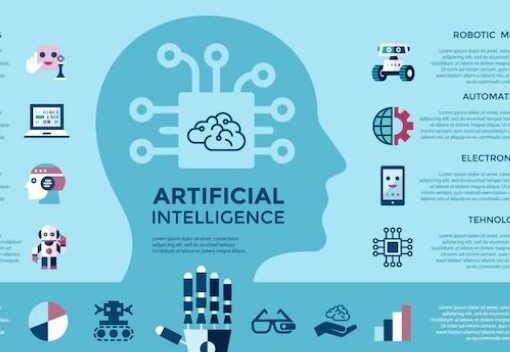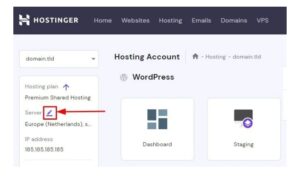Ever since the introduction of ChatGPT in 2022, the stock in trade of artificial intelligence has risen exponentially. From automated vehicles to virtual assistants, AI has revolutionized the internet world.
Many industries across varieties of sectors are massively adopting AI, signifying its potential takeover of the business world. From healthcare to education, agriculture to manufacturing, companies are using the ai to improve their productivity, eliminate waste, increase their revenue and edge out competitors.
Unsurprisingly, many tech giants are massively joining the AI bandwagon. The floodgate was opened by OpenAI with ChatGPT before Google responded to the challenge with Bard. Now, Microsoft and Meta have joined the fray with the introduction of Bing and Galactica AI chatbot models.
In this AI statistical research, we’ve compiled 75 essential artificial intelligence statistics you need to know in 2023. This marvelous research will likely make you a firm believer of AI and its potential to change the world dynamics.
AI Adoption Statistics
Artificial intelligence has become the new normal. It has the potential to revolutionize the global landscape. Hence, its adoption by different industries. In the below AI adoption statistics, we’ll take a look at how AI has fared since its introduction.
1. AI adoption is helping companies amass more profits.
(Source: Forbes)
2. The adoption of AI among large companies is two times more prevalent that it’s adoption among small companies.
(Source: IBM)
3. About 75% of companies have incorporated AI into their business strategies and have rethink their cloud plans to be more AI oriented.
(Accenture)
4. Only one in five companies is not thinking of embracing AI.
(IBM)
5. 97% of business owners believe their business stands a good chance of benefiting from ChatGPT.
(Statista)
6. AI transformation will gulp less time than digital transformation.
(Accenture)
7. In 2017, AI statistical adoption figures showed about 20%, whereas today, it has more than doubled, standing appreciably at 50%.
(McKinsey)
8. Between 2018 and 2022, organizations experienced a doubling in the average utilization of AI capabilities, such as natural-language generation and computer vision, with the number rising from 1.9 to 3.8.
(McKinsey)
9. Majority of C-level executive, specifically 85%, are convinced that integrating AI into their business operation will give them the lead over their competitors.
(Google)
10. 66% representing two thirds of respondents agree that the implementation l and machine learning will free up space for them to focus on strategic marketing activities.
(Accenture)
11. 98.1% of marketers affirm AI as a good to have knowledge for the successful operation of their business.
(Authority Hacker)
12. About 1 million active users embrace ChatGPT within the first five days of its introduction.
(Forbes)
13. Because of a lack of skilled manpower, 25% of companies are using AI as a rescue gap.
(Forbes)
14. 58% of Chinese companies have deployed AI into their operation, while only 25% of US companies have done so.
(Forbes)
15. 40% of I&O companies will adopt AI augmented automation to foster productivity and improve scalability.
(Gartner)
16. AI adoption reached massive momentum during COVID-19, with 37%, 27%, and 20% growth in the finance, retail and IT sectors respectively.
(Forbes)
17. 77% of our everyday device has some form of AI features embedded in it
(AV.VC)
18. 84% of global business are convinced that AI is a strategic opportunity that must be explored
(Deloitte)
AI Business Impact statistics
The coming of AI has been a blessing for marketers and businesses. It has massively upgraded their productivity and enabled them to focus on more human-centric tasks. Below are statistics relating to AI Business impact
19. 90% of marketers are confident in learning and adapting to new AI tools and technology.
(Authority Hacker)
20. 72% of C-level executive are confident that there would be massive AI advantage to the business world in the future.
(PwC)
21. Less than 20% of marketers worry about the negative impact artificial intelligence growth could have on their content quality.
(Authority Hacker)
22. ChatGPT is by far the most adopted AI, with 89.3% of early adopters using it to generate content.
(Authority Hacker)
23. 65.8% of people believe that there are basically no difference between human written content and AI generated content.
(Authority Hacker)
24. Over 75% of business consumers have great worry about AI misinformation.
(Forbes)
25. 64% of global businesses are convinced that AI will accelerate their progress and boost their productivity.
(Forbes)
26. The integration of AI in consumer packages guide has reduced forecast errors by 20%.
(Forbes)
27. There is growing plan by at least 75% of businesses to use AI systems to detect and eliminate fraud.
(Aiiot)
28. 87% of AI enthusiasts are using or contemplating the use of AI for forecasting sales and automating email marketing.
(Statista)
29. About 24% of business owners express their reservation about AI affecting website traffic.
(Forbes)
AI’s Employment and Layoff Statistics
Although AI has the potential to generate tons of new jobs, its impending revolution may put a lot of people out of their jobs. Nonetheless, below are AI statistics relating to layoffs and employment.
30. In America, about 16% of jobs will be automated by AI.
(Forrester)
31. A significant number of new jobs, estimated to be 97 million will be created by AI, assuaging for the anticipated job loss.
(World Economic Forum)
32. AI Adoption in various industries could result in about 400 million workers displacement.
(McKinsey and company)
33. A staggering 75% of employees are wary of potential job loss due to the advancement in AI technologies.
(Forbes)
34. 52% of experts are of the view that, although AI automation will likely cause job loss, there will still be many job that will be created by AI.
(Pew Research Center)
35. About 39% and 35% have respectively being hired for AI powered software engineering and data engineering roles in 2022.
(McKinsey & Company)
36. There would be an exodus of career switching by more than 375 million people by 2030.
(McKinsey & Company)
37. By 2030, the labor force would have reduced by one quarter of its current state.
(McKinsey & Company)
38. Nearly half of all employees will likely need to learn new skills to stay relevant at their job.
(Insider Intelligence)
AI market size and growth statistics
AI is an emerging technology capable of disrupting the world economy. With its potential to grow exponentially in the coming years. It is important to know the current growth trajectory and market size projection to prepare yourself ahead.
39. The current AI market size of about $100 billion is expected to reach $407 billion by 2027.
(Marketsandmarkets)
40. The healthcare industry receive the most AI investment of $6.1 billion, with the data processing and Fintech industries trailing behind with 5.9 billion and 5.5 billion respectively.
(HBR)
41. AI is projected to have a 21% net increase on the United States GDP by 2030.
(Statista)
42. About 90% of global business are already using AI to drive growth and boost productivity.
(Gartner)
43. AI Study is being incorporated in US universities with 19% of graduates specializing in the field.
(Venture Beat)
44. AI is expected to have an increasing impact in the coming years, potentially growing by 37.3% from 2023 to 2030.
(Grandview research)
AI prediction and challenges statistics
45. AI market growth is expected to have a compound annual growth rate (CAGR) between 21.6% to 37.3%, potentially getting as high $2 trillion by 2030.
(Juniper)
46. AI-powered health virtual assistants could help Doctors diagnose and organize data of up to 80% of patients.
(HBR)
47. 65% of consumers are willing to work with businesses incorporating AI into their operation.
(Forbes)
48. There are growing concerns among 43% of businesses on the over reliance on modern technology, with 35% particularly worrying about having the required skill to thrive in the AI world.
(Forbes)
49. Out of all industries that have adopted AI, the manufacturing industry is expected to be the biggest financial beneficiary of AI.
(Accenture)
50. A machine-learning algorithm that has a near 90% accuracy and can predict patients death has been developed by Stanford University.
(Forbes)
51. Potentially, the healthcare industry can save up to $150 billion due to AI usage by 2026
(Thrivemyway)
AI Transportation Statistics
The use cases of AI cut across different sectors. Among them is the transportation sector. Let’s take a look at the statistics
52. A staggering 75% of vehicles will be AI-powered by 2035.
(ABI Research)
53. Owners of AI-powered vehicles will save up to $20 billion in fuel cost and maintenance expenses by 2030.
(Accenture)
54. About 21 million representing 15% of total vehicle sales globally will be AI powered by 2040.
(McKinsey Global Institute)
55. The global market volume of AI autonomous vehicles is expected to reach 1.1 trillion by 2040.
(IHS Markit)
Final Thought
The rise of artificial intelligence has undeniably transformed various aspects of our lives and industries, as evident from the abundance of astonishing AI statistics. From improved efficiency and productivity to enhanced customer experiences and decision-making capabilities, AI has proven to be a powerful tool with immense potential.
As we continue to witness advancements in AI technology and its integration into our daily lives, it is clear that the future holds even more remarkable possibilities for artificial intelligence, paving the way for a world where machines and humans collaborate to achieve unprecedented levels of innovation and progress.





